Japan February travel overview: season, food, nature, events
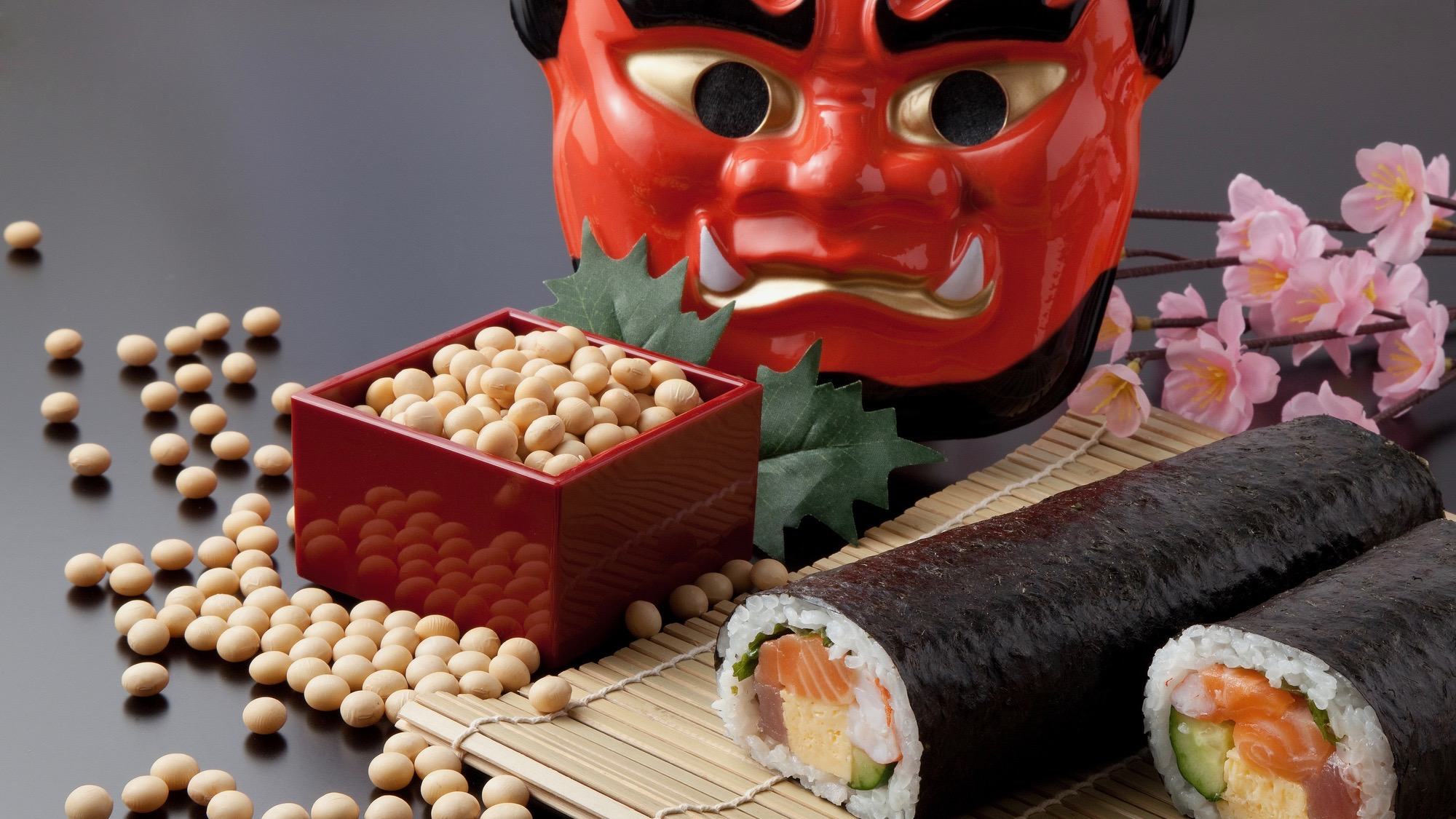
Traveling in Japan in February is a surprisingly “warm” and plum blossom pink and fragrant time with few crowds and still some of the best skiing of the season in the Japanese Alps and Hokkaido. February is last month of winter in Japan, but it is also a month that traditionally was the beginning of spring (based on the Chinese lunar calendar; which the Japanese abandoned in 1873). There are relatively few tourists at this time of year whether Japanese domestic tourists or foreigners.
The temperatures across Japan vary considerably during the February travel season as the country is so long from north to south. In general, the further south you travel, the warmer the temperatures will be at any time of year, but the major exception to this is that the Sea of Japan coast of Honshu, which gets very harsh winters with a lot of snow. The mountains through the middle of Honshu shield the south coast from the worst winter weather coming from Siberia and China, but the north coast can be surprisingly freezing.
In Hokkaido, the northernmost island, visitors can expect average February highs of 32° F (0° C) and a lows of 19° F (-7° C). The large cities of Honshu and Kyushu are warmer but still wintry, and some snow can be expected in Tokyo, Osaka, and Kyoto in February. These three cities, as well as Fukuoka in Kyushu, experience average February highs of around 50° F (10° C), and lows of 36° F (2° C). In the islands of Okinawa, far to the south of “mainland” Japan, winters are mild, as the islands are sub-tropical. Naha, the capital of Okinawa, has February highs of 66° F (19° C) and lows of 57° F (14° C).
In the Japanese tea ceremony, the month of February has been poetically captured with “goma” associations that capture the essence of each 10-day period: early February, mid-February, late February. These key words and themes that have been classically repeated in Japan for more than 1,200 years. The February goma key words can help you “imagine” what to expect when you travel in Japan in that month. Early February themes: Masu square wooden boxes used for beans for Setsubun events in early February ("old Chinese spring"); unmelted snow; spring snow.. Mid-February themes: Kan bai winter plum flowers in the cold weather; Kochi east spring winds. Late February themes: Ume ga Ka plum flower fragrance in the air; Hatsune first bush warbler’s song (the famous cry of the uguisu Japanese nightingale). A-o yagi early green willow leaves and boughs.
- Japan February travel food highlights
- Japan February travel tree and flower highlights
- Japan’s two most famous poems about ume plum blossoms
- Top destinations in Japan for February travel
- Japan February travel festival | event highlights
- Kitano Tenmangu Shrine: Japan's most famous plum blossoms!
- Interview with the head of Naito Shoten: brooms and brushes >
Content by Ian Martin Ropke, owner of Your Japan Private Tours (est. 1990). I have been planning, designing, and making custom Japan private tours on all five Japanese islands since the early 1990s. I work closely with Japan private tour clients and have worked for all kinds of families, companies, and individuals since 1990. Clients find me mostly via organic search, and I advertise my custom Japan private tours & travel services on www.japan-guide.com, which has the best all-Japan English content & maps in Japan! If you are going to Japan and you understand the advantages of private travel, consider my services for your next trip. And thank you for reading my content. I, Ian Martin Ropke (unique on Google Search), am also a serious nonfiction and fiction writer, a startup founder (NexussPlus.com), and a spiritual wood sculptor. Learn more!
Japan February travel food highlights
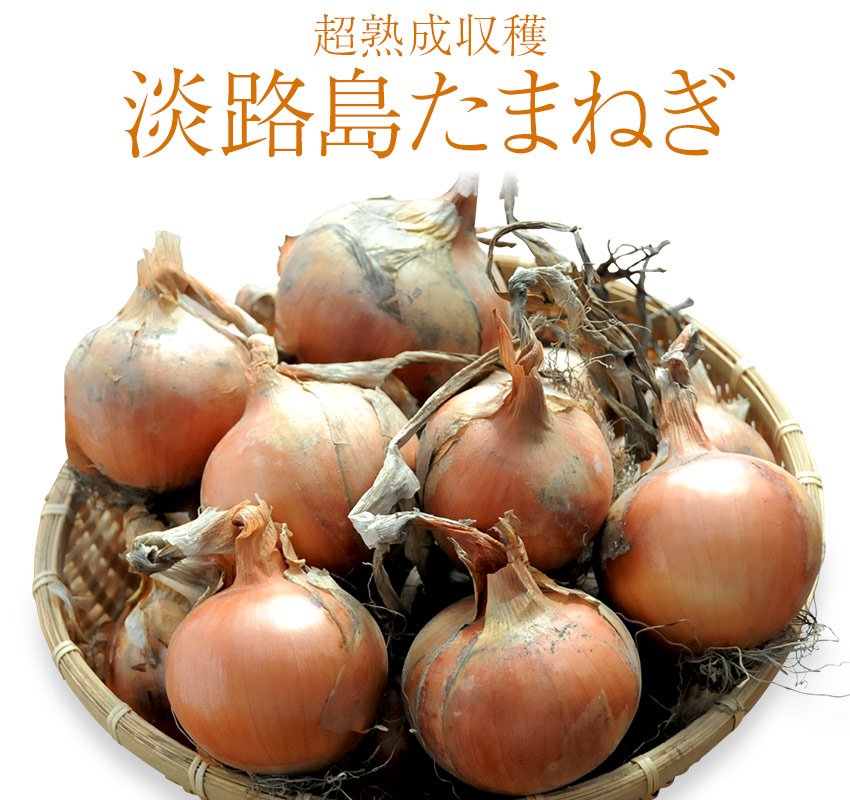
For travelers February is the last month of winter and so all Japanese winter foods are still available and there are many. You will find a detailed overview of the best Japanese winter foods in our Dec. travel overview page: everything from nabe hotpot cuisine and dried persimmons to meat stews, blow fish and oden.
However, February is notable for two foods one native and one not. Japanese tamanegi onions best of year: Japanese tamanegi onions are incredibly tasty and much loved and almost entirely grown in Japan! The early spring (read February) Japanese onions are sweeter and have a higher water content. Japan’s most famous tamanegi onion agricultural area is Awaji Island just off the coast of Osaka and Kobe and many Japanese domestic tourists go there to see and taste the February and March Awaji tamanegi harvest. In the Tokyo region you can find the best onions of the year at the Ueno food markets, the food markets of west Nishi-Shinjuku, and in the basement gourmet sections of all top department stores. Onions are the least expensive Japanese vegetable but all the same they are used every day for making misoshiru morning soups and all kinds of home cooking!
Avocados for Cal sushi rolls and fusion kaiseki cuisine: The best avocados of the year also hit the supermarket and department store gourmet basement delis in February. They are all imported, mostly from Mexico and Peru and some from New Zealand and the Philippines. But that’s not the point. What is important for foodies is the quality and the Japanese spring avocado imports are simply beyond perfect (Haas!). I was in Tokyo when the first ever avocados started appearing on high-end international supermarket shelves (for diplomats and those “in the know”) in the early 1980s. It took the Japanese nearly 20 years to really appreciate avocados, but they do now! California sushi rolls are popular, and avocado is like a new kind of sashimi. And high-end fusion and kaiseki chefs have also come to truly love the texture, shape and nature of avocados. They’re truly “exotic,” expensive enough, and appreciated in Japan and February is the best month of the year for avocados!
- Japan February travel food highlights
- Japan February travel tree and flower highlights
- Japan’s two most famous poems about ume plum blossoms
- Top destinations in Japan for February travel
- Japan February travel festival | event highlights
- Kitano Tenmangu Shrine: Japan's most famous plum blossoms!
- Interview with the head of Naito Shoten: brooms and brushes
Japan February travel tree and flower highlights
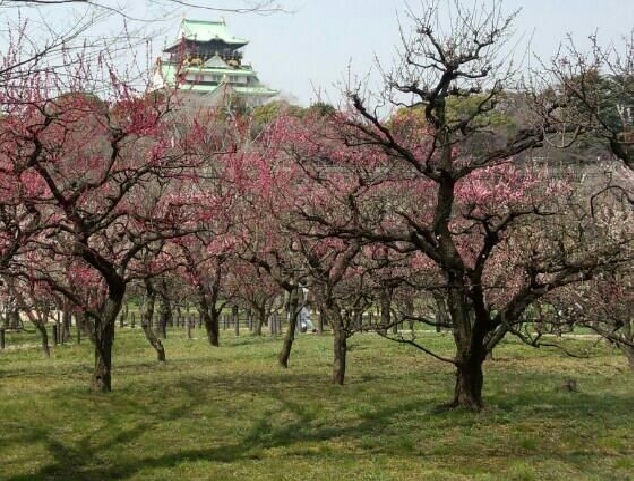
Tsubaki camellias: Winter’s passion flower: Camellias are widely in bloom in February across the colder parts of Japan and they are stunningly beautiful in red and white blossoms surrounded by shiny dark green leaves and smooth barked branches and trunks. Buddhist gardens favor Tsubaki camellias. The following link will take you to the December Japan travel section that will tell you a lot more about camellias.
Early cherry blossoms in Kawazu (mid-to-late Feb; just west of Tokyo): Kawazu, about 90-120 min from downtown Tokyo on the warm side of the rugged Izu Peninsula (a little north of Shimada, where the USA arrived in iron-hulled ships and “ended” the Tokugawa shogunate), is famous across the main Honshu island of Japan for the very first cherry blossoms. If you are traveling in Japan in this month then do plan your itinerary to end or start in Kawazu to experience sakura cherry blossoms. And you will also find early cherry blossoms at the top of the peninsula at Atami station (a bullet train station), along Atami’s Itogawa River.
Ume plum blossom orchards are perfect for picnics on sunny days: Many will say that the sakura (cherry) blossoms are their favorite blossom of the year. But the ume plum blossom moment in February is even better! No crowds! Strong blossom fragrance. And branches that painters still try to capture all over Japan. The number of classical “famous” Japanese screens and paintings devoted to plum trees and plum blossoms is overwhelming and emotionally moving!
The Japanese got their plum trees from China in the Nara period (8th century). Two hundred years later they were an imperial tree and the “favorite” flower of the Heian aristocracy and Heian literature. And this never really changed for Japanese high culture. The ascent of the cherry tree has a lot to do with the ascent of Japanese nationalism in the late 19th and early 20th century. Cherry trees are native to Japan! Plum trees are not!
Plum trees can become very old, and their very shape and silhouette is exotic. The flowers have a strong, sweet smell (unlike the cherry blossom that has no smell) that attracts bees without fail. The plum is also said to be the favorite resting place for the rarely seen but much heard uguisu (Japanese nightingale), harbinger of spring. Finally, plums have long been used to make wine (umeshu) and pickles (umeboshi).
Plum blossoms can be a deep red or white. These are the colors of celebration and happiness in Japan. Nearly all gift wrapping in Japan uses red and white in some form: this comes from the colors of the ume.
In addition to the pine and bamboo, plum trees, branches and flowers appear constantly in Japanese art and culture. Actually, the three together (sho-chiku-bai, read as sho for pine, chiku for bamboo and bai for plum) express enduring happiness. Sho-chiku-bai is also used to grade course meals in kaiseki restaurants: sho is the most expensive course and bai the least expensive.
Artists say the shape of the plum trunk and branches, which seem to zig zag, is fukaku, the Oriental art equivalent of foreshortening in perspective painting. In classic scrolls and screens, you will see that entire trees and branches are always drawn or painted in certain manner. That’s fukaku.
Plums are part of every household. Salty umeboshi are a great curative for stomach complaints, and there are plum poultices too. People say the common cold is the source of all sickness, and plums can nip it in the bud.
Plum trees, because of their fruit, are believed to ward off danger. On many older plots of land, you will find plum trees planted in the northeast corner, the so-called demon’s gate, from where danger and evil are believed to enter. Because of this belief, many family crests also incorporate the plum blossom into their design. Umeboshi, pickled sour plums, are also believed to keep danger away, when eaten.
But most of all, plum blossoms herald spring and offer the perfect occasion for the year’s first morning picnic or afternoon picnic. In ancient times, plum orchards became the spring destination for ladies of the Imperial Court in magnificent dress, to compose poetry and celebrate the start of the love season.
Spring in Japan begins with the Chinese New Year (the second new moon of the year) which is what Setsubun used to be (as of 1873 when Japan changed calendars the date is fixed as Feb 03). Plum trees bloom around this time and are considered the first sign of spring. Late in February (and even more so in March) some days are so warm that you can sit outside in the spring sun under plum trees (and many do).
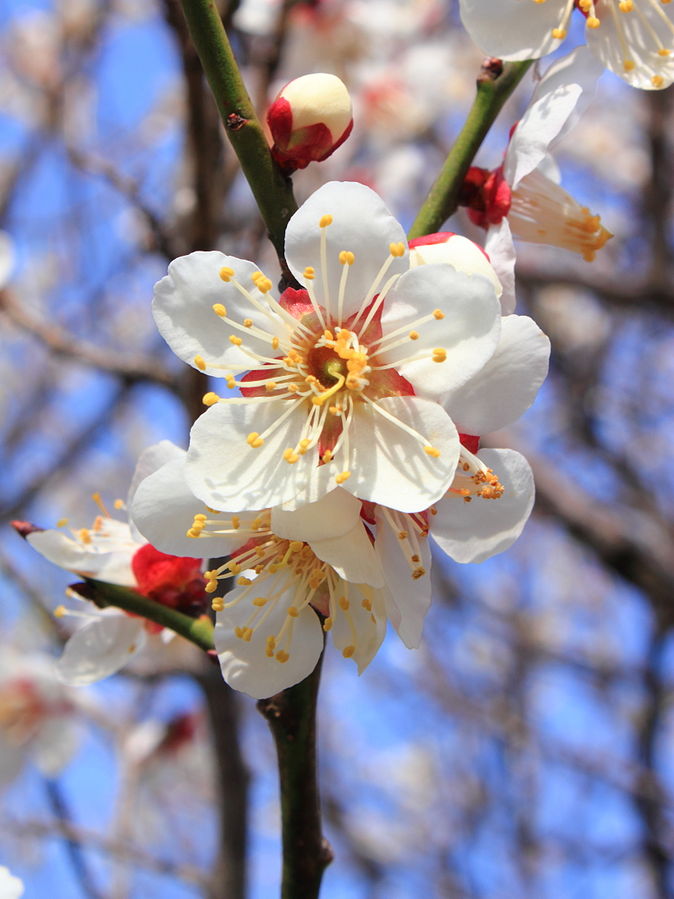
Best Plum Blossom Viewing Spots in Kyoto and Tokyo:
In Kyoto: Kitano Tenmangu Shrine: See mini essay below on this incredible Kyoto shrine, the mother shrine of education for all Japanese students and probably the most famous ume plum blossom location in the country. Zuishin-in Temple: This temple is one of the most famous in Kyoto for its plum trees. Located in Yamashina, the temple also has a particularly fine garden featuring a wide expanse of moss, a pond and a stunning arrangement of rocks. Open daily in March, 9:00-16:30. Located southeast of Ono Stn. on the Tozai subway line; Tel: 571-0025. Kyoto’s Old Imperial Palace: There are large, public plum groves (about 250 trees) southwest of the inner palace. They are a popular place for picnics, especially on warm Sundays. Kanshu-ji Temple: One famous old plum here was transplanted from the Imperial Palace in the Edo period (1603-1868). Kanshu-ji’s garden has a wide perspective much like a small park (the pond alone is 200 meters long); in the background looms Mt. Daigo. Located west of Ono Stn on the Tozai subway line. Nijo Castle: There are about 140 plum trees in the southwest garden of the Nijo Castle complex; flowers in several colors (pink, red, white). Jojakko-ji Temple: Located at the base of legendary Mt. Ogura, on Kyoto’s famous Arashiyama (bamboo grove!) side, Jojakko-ji Temple has a long and storied relationship with plum blossoms. About 20 min. walk from JR Saga Arashiyama Stn.
In Tokyo: Hanegi Park (Setagaya; residential); Koishikawa Korakuen gardens (downtown); Ushi-Tenjin Kitano Shrine (downtown; fairytale-like); Shiba Park (downtown near the waterfront); Odawara Ume Matsuri (Odawara is the name of the first shinkansen bullet train after Yokohama; the entry point to Hakone | Mount Fuji); Kameido Tenjin (downtown); Ikegami Plum Garden (about 12 km southwest of Tokyo Station).
- Japan February travel food highlights
- Japan February travel tree and flower highlights
- Japan’s two most famous poems about ume plum blossoms
- Top destinations in Japan for February travel
- Japan February travel festival | event highlights
- Kitano Tenmangu Shrine: Japan's most famous plum blossoms!
- Interview with the head of Naito Shoten: brooms and brushes >
Japan’s two most famous poems about ume plum blossoms
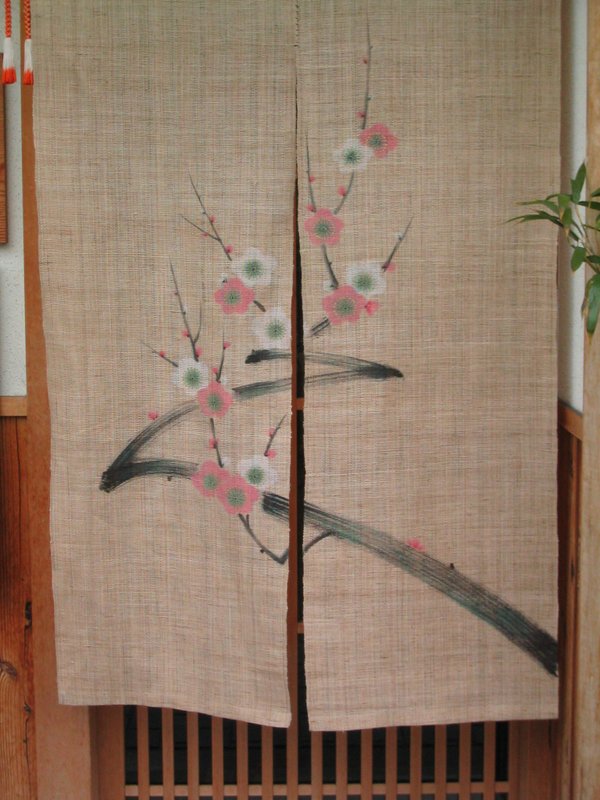
Ono no Komachi, known for her beauty, poetry and madness, lived in the middle of the 9th century and served as a lady-in-waiting in the Heian court. Despite her legendary beauty and obvious passions, she never married. But her poems more than make up for whatever she may have missed in the way of marital bliss. In midlife she was sent out of the capital to Yamashina, where she supposedly resided for some years at Zuishin-in Temple (famous for its plum blossoms; see above). She is said to have gone mad there and the temple now honors her every year on March 25th with the Hanezu Odori. Children dressed in faint pink kimono will perform dance and song. She probably wrote this poem during her stay at the temple.
The color of the plum blossoms have faded
Vainly, I age through the rains of the world
Watching in melancholy
Izumi Shikibu (circa 1000), another great woman writer of the Heian period, also wrote lasting poetry. Izumi Shikibu got her name from her marriage to the governor of the province of Izumi. She divorced him after their first child and returned to the court in Kyoto, where she had been raised. Soon she was having an affair with a prince, who died, and then his brother, who also died. She recorded both of these affairs in her diary, including a number of passages and poems that clearly indicate how much she loved and how much she had lost. Her final years were spent on Mount Yoshiya at Toboku-in. And for hundreds of years, Seishin-in, a sub-temple of Toboku-in, has been celebrating her life. The temple moved its location to Kyoto’s downtown heart in the Momoyama period (1568-1600): east side of Shinkyogoku, a little south of Rokkaku.
Seeing the plum blossoms
I wait for the song of the warbler
Spring has come
Veiled in mist
- Japan February travel food highlights
- Japan February travel tree and flower highlights
- Japan’s two most famous poems about ume plum blossoms
- Top destinations in Japan for February travel
- Japan February travel festival | event highlights
- Kitano Tenmangu Shrine: Japan's most famous plum blossoms!
- Interview with the head of Naito Shoten: brooms and brushes >
Top destinations in Japan for February travel
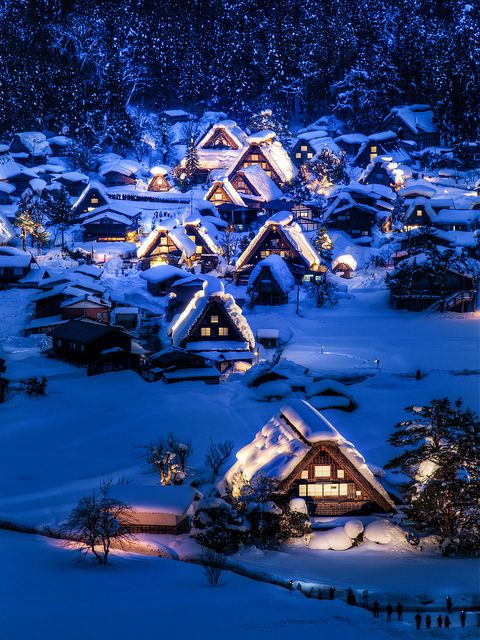
Winter Sports Downhill Skiing: Though the best skiing is in the distant Japanese alps, there are plenty of good slopes to have fun on near Kyoto. Mount Hiei: operates 10:00-22:00 (from 9:00 on Sun.); Tel: (075) 781-8145. Biwako Valley: great views of Lake Biwa; Tel: (077) 592-1155. Hirogawara: 11:00-23:00 (from 9:00-on Sat., Sun.); no lodge; Tel: 075-746-0850. Hakodate Yama: considered a good slope and Hakodate is a great little castle town!; Tel: (0740) 22-2486. Cross Country Skiing & Winter Hiking: In the winter season, the Miyama Nature & Culture Village, about three hours from Kyoto, offers special 1-day and 2-day winter hiking group tours, and cross-country skiing. For information, call the Miyama Nature & Culture Village: Tel: 0771-77-0014. Ice Skating: Look for glide time here: Daigo Ice Skating Rink: the biggest indoor rink in Japan; Tel: 622-5013. Biwako Panorama Skating Rink: near Keihan Hama Otsu Station; Tel: (077) 522-8051.
The thatched roof villages of Shirakawa-go and Gokayama: Both of these “ancient living” villages have been UNESCO World Heritage Sites since 1995. They are famous for their thatched roof farmhouses, some of which are more than two hundred years old. While Shirakawa is very easy to get to from Takayama and also a great place to spend the night in a ryokan or minshuku (Japanese B & B), Gokayama is a bit more remote but also has far less tourists.
Hokkaido, Sapporo: The Hokkaido region and its leading city, Sapporo, is Japan’s most famous and popular winter destination for tourists, domestic and international. Winter sports, winter ice festivals, winter sea ice and wildlife and great seafood. The Sapporo’s famous Yuki Matsuri (Sapporo Snow Festival). Japan’s biggest winter festival takes place in February (lasting seven days). The fabulous ice sculptures are especially popular in the evenings when they are beautifully illuminated. Kitami Winter Barbecue Festival (early Feb): This winter BBQ festival is a great way to warm up and enjoy top quality foods in winter. This unique festival was organized to showcase Kitami as the place to enjoy a lively winter yakiniku barbecue. All the meat and seafood are prepared on “traditional” shichirin charcoal stoves. Asahikawa winter festival (early Feb.; Asahikawa, Hokkaido): The Asahikawa Winter Festival is Hokkaido's second largest winter festival (after Sapporo's Snow Festival). This huge snow sculpture festival takes place in early February, around the same time as the Sapporo Snow Festival. Every year one massive ice sculpture is built as a stage for special performances. Every year the sculpture theme changes and some of the ice structures are just amazing! Otaru Snow Light Festival (February 9-18): The city of Otaru is famous for this illumination festival that lights the city’s old streets with 120,000 candles glowing in the snow. The people of Otaru feel their festival helps people forget their troubles and experience something truly “spiritual.”
Japanese Onsen destinations: town & country: February is also one of the most popular months to soak away the cold in a traditional onsen hot spring. Stay in a ryokan, visit for the day, or check out the super sentos in the big cities. All choices lead to hot water relaxation and clean calm. There are too many hot spring resorts to mention but here are the top destinations: Kyoto | Osaka area: Kurama Onsen; Ohara village hot spring ryokans; the luxurious worlds of the onsen village in northeastern Osaka province (access from Kameoka if staying in Kyoto); the hot springs along the Tango Peninsula and in Hyogo prefecture’s Kinosaki. There are many more . . . Tokyo region: Some of the best hot springs in Japan are not far from Tokyo, including those on the Izu Peninsula (especially Shuzenji); the Mount Fuji area; Nagano area (also for skiing) and a bit further north (especially the Ginzan spa town).
- Japan February travel food highlights
- Japan February travel tree and flower highlights
- Japan’s two most famous poems about ume plum blossoms
- Top destinations in Japan for February travel
- Japan February travel festival | event highlights
- Kitano Tenmangu Shrine: Japan's most famous plum blossoms!
- Interview with the head of Naito Shoten: brooms and brushes >
Japan February travel festival | event highlights
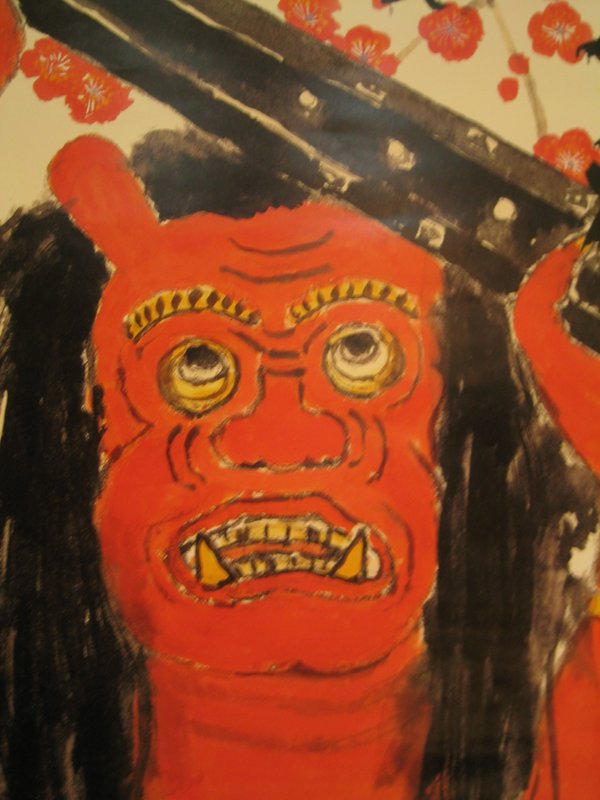
Oni Japanese devils and old Setsubun spring rituals: Though Japan’s perennial and hard-to-get-rid-of Oni or devils are sent on their way every Setsubun (old beginning of spring in the Chinese lunar calendar), they always return. The Japanese keep their superstitions alive! And they live on eternally in Japanese art, theater, and in the scary stories parents pass on to their children. Even today, Japanese parents continue to warn children with: “Behave or the oni will come!” And if mom or dad is in a bad mood, someone will warn the rest of the family by miming horns on the head meaning someone is 'angry like the devil'. Malevolent or mischievous, oni are always ugly, and generally considered to be bad. They have horns, fangs, hideous faces, claws and red or blue skin. And they are always changing to keep up with times, or as historical interpretation demands. Some families and even villages claim to have descended from oni. Kyoto’s northeastern village of Yase is one such village. In the 2nd century 'Kojiki' (A Record of Ancient Matters), oni belonged to a part of the underworld that took care of the dead. And early female shikome demons, grotesque but not necessarily evil, evolved into a class of female witches. When these ladies become angry, usually because they are jealous, watch out! These horned, crazed creatures can do the most dreadful things. In the 10th century tale 'Rashomon,' the people of Kyoto are terrorized by a hannya, the worst possible female devil. This one haunted the city's Rashomon gate, paralyzing the population with fear at night. One warrior vows to kill her, only to fall for the demon-turned-young-beauty trick. But, just in the nick of time, he manages to wake up and chop off one of her arms. She gets away and the story goes on. Beginning in the Kamakura period (1185-1333), oni became more masculine and brutal, a reflection of the enemy for Japan’s new samurai class. In the samurai world, a warriors’ strength had to be supernatural, and, of course, the devil had to be overcome too. The nasty and infamous red cannibal, Shuten Doji, in the 'Tale of Mount Oe,' kidnapped and ate his countless helpless victims, before Minamoto no Yorimitsu is summoned from Kyoto to dispatch him. This time the good guy tricks the oni, by slipping him some drugged sake, and wins. Oni are also a prominent motif in Buddhist hell scrolls, which often feature Shoki, the super Buddhist devil slayer, who is always busy slaying demons left and right. In the 17th century, the rising merchant class commissioned artists to depict the decadent deeds of the “so-called” leading classes: and suddenly lots of bureaucrats, samurai and monks were caricatured as devils. And today’s animated world of pop culture is still full of all kinds of decadent oni. Those oni are just impossible to get rid of. Try as we might!
- Japan February travel food highlights
- Japan February travel tree and flower highlights
- Japan’s two most famous poems about ume plum blossoms
- Top destinations in Japan for February travel
- Japan February travel festival | event highlights
- Kitano Tenmangu Shrine: Japan's most famous plum blossoms!
- Interview with the head of Naito Shoten: brooms and brushes >
Kitano Tenmangu Shrine: Japan's most famous plum blossoms!
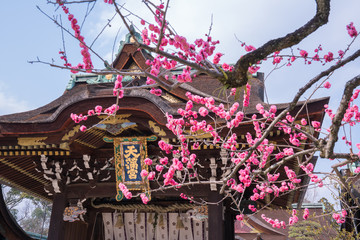
Kitano Tenmangu Shrine is one of the most dignified Shinto shrines in Kyoto. The shrine deity is Sugawawa no Michizane (845-903) known for his poetry and general scholarly genius. He is the only human being deified at a Japanese shrine. How he became a deity is an interesting story.
Because of his genius, Sugawara held a high position in the court and was much consulted by the emperor. However, as the result of a terrible lie by an ambitious high-ranking court noble, Sugawara was exiled to an isolated area of Kyushu where he died sad and lonely soon after.
Soon many strange and terrible things began to happen in Kyoto: terrible sickness, murders, and natural disasters. Kyoto citizens began to say that Sugawara’s ghost was taking revenge on the capital as everyone now knew he was innocent of his crimes. To calm the citizens and hopefully make the capital peaceful again, the emperor decided to enshrine Sugawara’s spirit at Kitano Tenmangu Shrine. It seemed to have worked because the capital suddenly became peaceful again.
Since that time, the shrine has been especially popular with students who come to pray here for success in study general and for good grades on their entrance examinations in particular.
Every year on February 25th, a grand festival to commemorate Sugawara’s spirit is held at the shrine. The festival is called Baika-sai or Plum Blossom Festival, as Sugawara especially loved the Japanese plum. He wrote many poems about the plum. February and March are the best time for plum blossom viewing. In the precinct of the shrine, there is a huge plum orchard with about 2,000 plum trees of 50 different kinds. On the day of the festival, starting from 10:00, a ritual is held at the main hall and a grand tea ceremony is held outdoors. The tea ceremony is based on the giant public tea ceremony Toyotomi Hideyoshi (1537-1598) held at the shrine in 1587. Tea is served by real maiko and geiko from Kamishichiken Flower Town. On this day, you can enjoy several wonderful experiences at one time: beautiful plum blossoms, the graceful appearance of real maiko and geiko, and fine maccha green tea (\1,500 including tea, admission fee and omiage gift). Tickets are sold to the first 3,000 people. What is more, the 25th of every month is the day of the grand Tenjinsan antique flea market. Don’t miss this special day!
- Japan February travel food highlights
- Japan February travel tree and flower highlights
- Japan’s two most famous poems about ume plum blossoms
- Top destinations in Japan for February travel
- Japan February travel festival | event highlights
- Kitano Tenmangu Shrine: Japan's most famous plum blossoms!
- Interview with the head of Naito Shoten: brooms and brushes >
Interview with the head of Naito Shoten: brooms and brushes
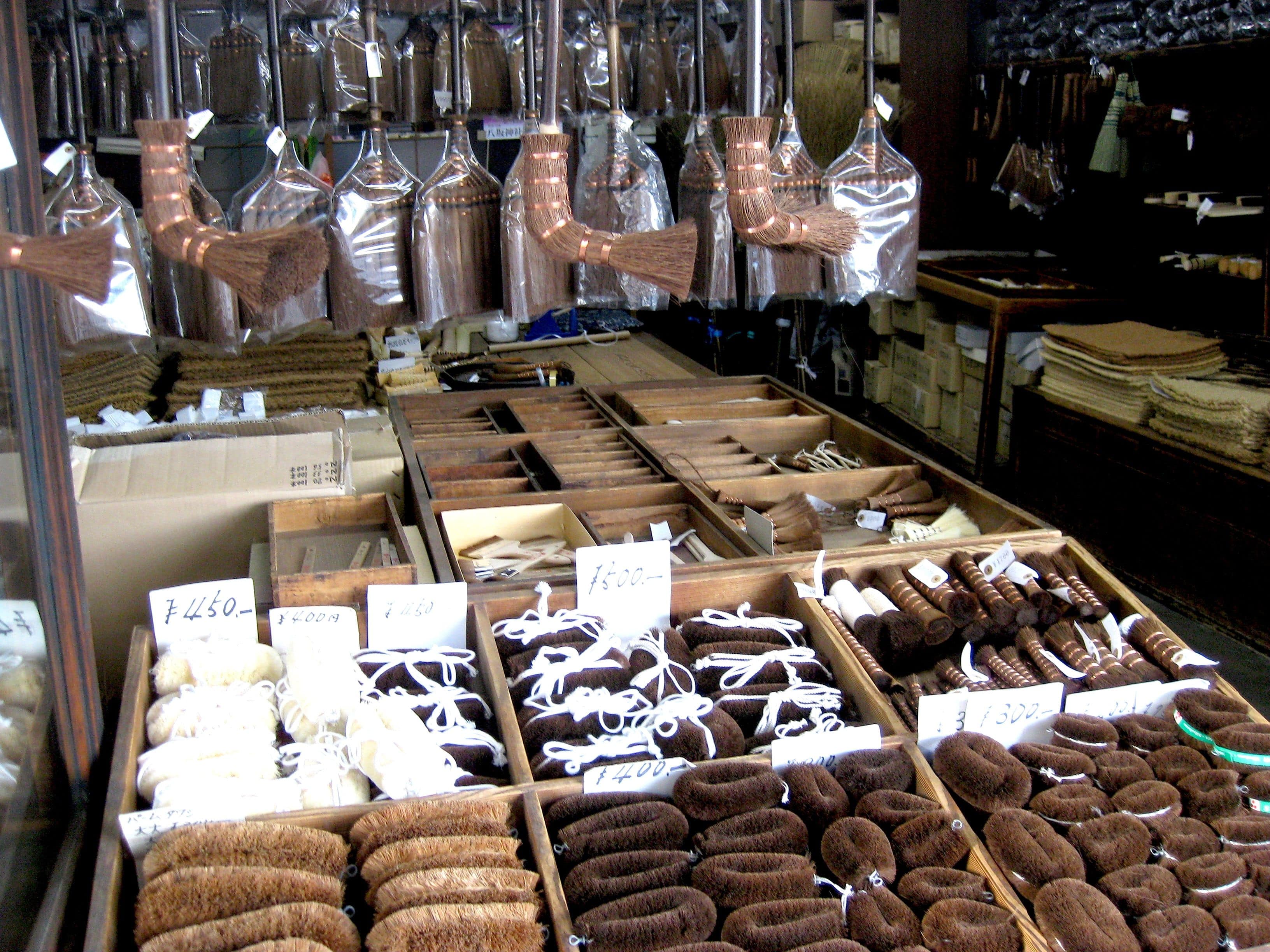
In Japanese there is an expression that goes like this: Anna otoko wa hoki de haku hodo aru (That kind of man is as common as broom sweepings; i.e., Men like him are a dime a dozen.). Good brooms and other good things are getting harder to find these days in Japan. But Naito Shoten, now in its 8th generation, still sells the real thing: the kind of brooms and brushes that last a lifetime (like good men and good marriages).
Besides being a shop that sells handmade things that haven’t changed much for hundreds of years, Naito Shoten also symbolizes the last of a dying breed of Kyoto shops that have remained true to their roots in every way.
Naito Shoten stands a few meters from what is considered to be the end of the ancient Tokaido highway that joined Edo (Tokyo) with Kyoto. Today, with the exception of Naito Shoten and the old cracker shop next door, the end of that highway has become a convenience store, and an American coffee shop followed by a canyon of featureless new buildings. The old-world storefront of brown and golden brooms and brushes remains as it was 80 years ago or more, and it somehow acts to stop foreigners and young Japanese people in their tracks, as if they have seen a friendly ghost of sweeter days and slower times. You will feel the same. [This interview took place in August 2001.]
YJPT: How did Naito Shoten get started?
Naito-san: Well the shop opened in 1869. From the beginning we specialized in shuro (the outer skin of the hemp palm) products. In the beginning the shop was called Naito Rihei. My grandmother changed the name to Naito Shoten.
YJPT: What were your first products?
Ms. Naito: The first product we sold widely and really built our reputation on was hemp palm brooms like this one here. This is nearly a hundred years old. My great-great-grandfather made it. We have been using it ever since. It’s still perfectly good. The bristles never fall out. They just get shorter.
YJPT: What did this area used to be like?
Naito-san: Most of our neighbors used to be ryokan (traditional Japanese inns) because the bridge was both the beginning and end of the old highroad to Edo. One of our neighbors, the one where Starbucks is now, was the famous Omiya ryokan, where daimyo (feudal lords) stayed when they were in Kyoto. It was there until a year ago. The sembei (Japanese cracker) shop next door is not that old. It’s only been there for about three generations. We’re not really that old either, we’ve only been here for five. Really old families in Kyoto go back fifteen generations or so if they are lucky. Most shops in this area sold out in the last 20 years or so. We’re proud that we’ve been able to preserve this shop.
YJPT: When did your family stop making things here?
Naito-san: My father was the last Naito to make things here at the shop. Now all of our products are made by elderly Kyoto craftworkers working out of their homes. Each one has his own specialty. These craftsmen often tell me that it feels really good to sell their products at an old traditional shop. They are not just thinking of the money. They are thinking about the feeling. This is so important. For us, these craftsmen are everything. I wish for their good health every day.
YJPT: What kind of customers do you have these days?
Naito-san: We have foreign customers from all over the world. Most are American or German. I don’t know where they find out about us. We don’t advertise much.
Many foreigners understand and are very interested in traditional Japanese things. Some of them even know more than Japanese people. This makes me really happy. Japanese people should be interested in these old things too.
These days, many young Japanese visit us too. They tell me that they do not like the sound of their vacuum cleaner. They are changing and starting to think about pollution and healthy living. Many temples also buy from us. And we have our old, special customers from Okinawa to Hokkaido.
There are only three of us at the shop now. We do all our business by telephone. That is the easiest way to do business. Sometimes department stores come and ask me to open a boutique or do a show inside their giant stores. I always tell them the same thing: we like to have direct contact with our customers. My father did one show at a department store in Osaka. We sold everything, but it was a nightmare because we could not produce enough for the show.
We cannot wholesale, because our products are limited. There’s not enough shuro anymore. The hemp palm only grows wild. We used to find it in Shikoku, but now you can only find it in Wakayama. And there is not enough of it. They only skin the trees once a year.
YJPT: And what are your customers buying?
Naito-san: Oh, everyone is different. We have people who buy soft-bristle bushes to clean their computer keyboards. Some use another brush to clean their hanko (name seal or chop). Some use such a brush to clean their ashtrays. Another the corners of dusty old cabinet drawers. Others scrub their shirt collars white and clean with a brush like this. These ones are great for scrubbing black kettles and pots shiny clean. Naturally, many housewives and monks come for our brooms. Some for hardwood floors, others for tatami or concrete floors. We also have body brushes made of horsehair or soft shuro.
YJPT: Do you have a favorite places in Kyoto?
Naito-san: I like the places that are not crowded. The best places today are the places that are not too popular. I used to go with my mother to the Path of Philosophy when I was very young. But now the path is lined with shops. I love walking along the river north of Kitaoji. The road is still pretty much the same. Not many shops, few people. North of Kamigamo towards Kumogahata is also wonderful. I also love Ohara. Passing through the Kyoto Botanical Gardens and walking up towards the Kyoto International Conference Center and the Takaragaike area is also a favorite route In the old days, this was nothing but rice fields, and a few big old farmhouses. I miss those days.
Note: Need a handmade brush or broom to clean your house or garden? Who doesn’t? Naito Shoten has everything, including brushes for long glasses, pot cleaners, and door mats. On the north side of Sanjo, just west of the Kamogawa River . Open daily 9:30-19:00. Tel: 221-3018
Japan month by month private travel & culture summary index
Japan spring travel: Mar, April, May. Learn more!
Japan summer travel: June, July, August. Learn more!
Japan autumn travel: Sept, Oct, Nov. Learn more!
Japan winter travel: Dec, Jan, Feb. Learn more!
Content by Ian Martin Ropke, owner of Your Japan Private Tours (est. 1990). I have been planning, designing, and making custom Japan private tours on all five Japanese islands since the early 1990s. I work closely with Japan private tour clients and have worked for all kinds of families, companies, and individuals since 1990. Clients find me mostly via organic search, and I advertise my custom Japan private tours & travel services on www.japan-guide.com, which has the best all-Japan English content & maps in Japan! If you are going to Japan and you understand the advantages of private travel, consider my services for your next trip. And thank you for reading my content. I, Ian Martin Ropke (unique on Google Search), am also a serious nonfiction and fiction writer, a startup founder (NexussPlus.com), and a spiritual wood sculptor. Learn more!